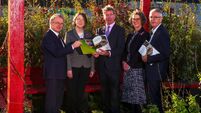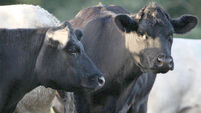Currency fluctuations having worst impact on farmers based in border counties
On July 1, the euro hit its highest value against sterling since March 2010 with €1 worth 90.5p.
But the exchange rate had moved 3.6% by August 5, with the euro having declined in value to 86.9p — a shift of more than 4%, attributed mainly to interest rates on sovereign debt climbing in Italy and Spain, two of the largest economies in the eurozone. With investors wary about investing in government debt in these struggling countries, the euro came under pressure.
The strengthening euro at the start of July enabled southern buyers to shop for livestock in the northern marts, which helped to arrest seasonal decline in sheep prices, for example. However, southern agents have less to spend in sterling terms in recent weeks, and lamb prices have been falling north of the border as a result.
In general, a stronger euro is bad for the southern agri-food industry, because its exports become less competitive on the British market, which takes about half of many of Ireland’s most important agri-food export categories.













